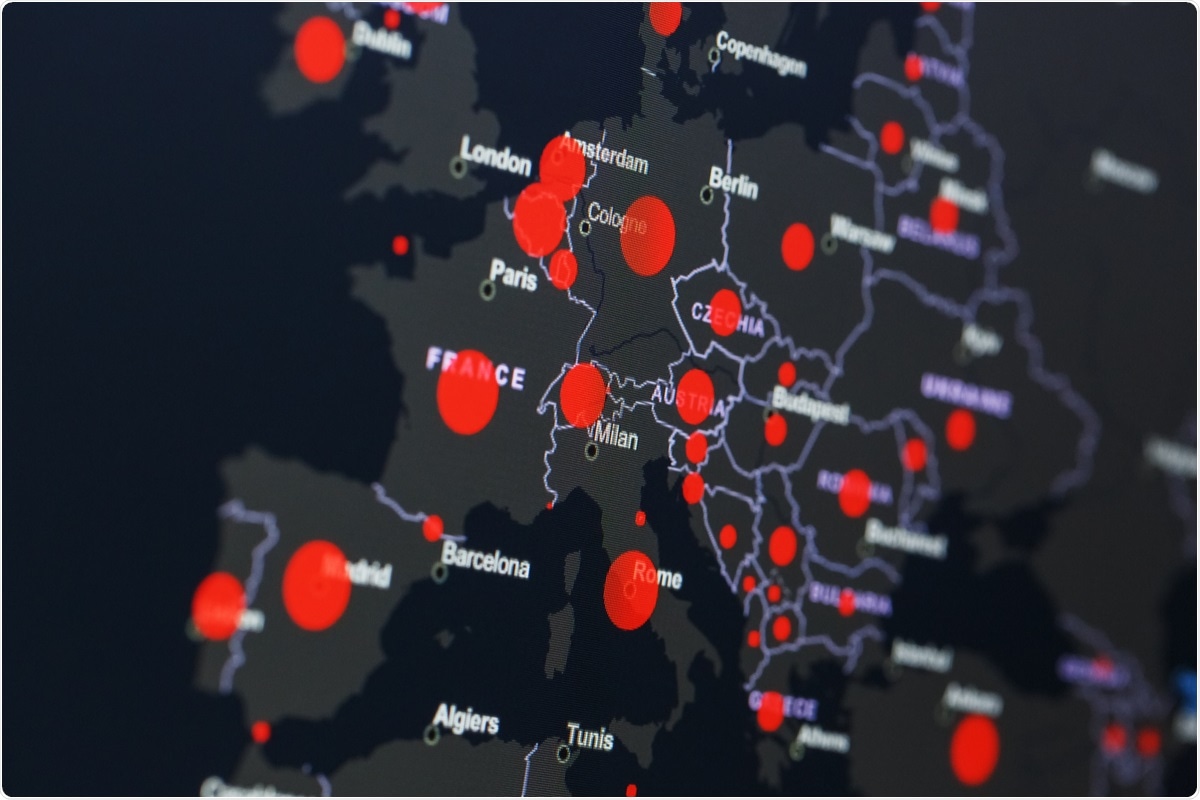Severe acute respiratory syndrome coronavirus 2 (SARS-CoV-2) is on track to spread in European countries such as Romania that have an older population and low vaccination rates, according to new research published in the medRxiv* preprint server.
 Study: Unexposed populations and potential COVID-19 burden in European countries. Image Credit: Aleksandr Grechanyuk/ Shutterstock
Study: Unexposed populations and potential COVID-19 burden in European countries. Image Credit: Aleksandr Grechanyuk/ Shutterstock
Many European countries have had a high number of coronavirus disease 2019 (COVID-19) cases, but not all countries experienced the same infection rate, meaning less naturally acquired immunity. In addition, vaccination has slowed down in some countries, especially among younger people. With the emergence of Delta and other variants of concern, the researchers note that COVID-19 will be a recurring problem for many countries.
Our results suggest that the potential remaining burden of COVID-19 hospitalisations and deaths across the 19 European countries considered is substantial, amounting to over 900,000 hospitalisations and 300,000 deaths, and that it varies considerably between countries, with countries that have experienced less transmission so far, have lower vaccine coverage and/or have older populations having much higher potential outstanding burdens," concluded the research team.
The researchers suggest governments should implement public health policies and non-pharmaceutical efforts to encourage vaccine-induced immunity.
The study
Each country presents its unique challenges with the coronavirus pandemic. However, common factors shared amongst European countries include the percentage of people in each age group with naturally-acquired immunity, the percentage of people with immunity via vaccination, and the population's makeup (older versus younger).
Understanding each factor can help in forecasting the population-level risk of developing severe COVID-19 illness. The current study categorized COVID-19 deaths by age and their vaccination status to calculate how effective vaccines were in preventing hospitalization and death. As more people got vaccinated, fewer people died from COVID-19 infections.
The lowered risk of death was similar in most European countries except for England and Romania. The researchers explain that this is likely because they had earlier and slower vaccine rollouts. Also, a more profound impact from vaccination was probably observed because countries such as Italy and Portugal have older populations making the fatality rate much higher, to begin with.
Natural immunity after recovering from a COVID-19 infection also helped with protection against SARS-CoV-2 variants. However, the rates of naturally acquired immunity differed across countries. For example, Norway's population had 3% naturally-acquired immunity while Romania had 70%.
The researchers also calculated the level of protection provided from vaccine-induced immunity and naturally acquired immunity from breakthrough infections.
The study assumed both types of immunity wane slowly and that the number of vaccinated individuals was larger than people who gained immunity after infection.
The above assumptions suggest very few individuals over the age of 40 were either unvaccinated or never exposed to COVID-19 infection. Consequently, it suggests many unexposed unvaccinated individuals were people younger than 40.
Results showed that hospitalization rates varied across countries. For every 100,000 individuals, about 62 people in England would require hospitalization, and 840 people would require hospitalization. The stark contrast may be due to England's high vaccination rates and high level of naturally-acquired immunity. Meanwhile, Romania has low vaccination coverage and an older population at high risk for COVID-19 complications.
For Denmark, an estimated 6,300 people would require hospitalization from severe COVID-19 infection. Germany is predicted to have about 280,000 future hospitalizations for COVID-19.
The number of COVID-19 deaths is similar across countries. For every 100,000 people infected with COVID-19, about 19 are estimated to die in England compared to 360 people in Romania. Slovenia is estimated to have about 1,200 deaths per every 100,000 infected. Germany is predicted to see 115,000 deaths.
Aside from Romania, where vaccine coverage is low, countries with a combination of lower vaccine coverage among older age groups, relatively low prior exposure and older populations (Austria, Finland, Germany, Greece, the Netherlands, Slovenia) have the highest maximum remaining burdens, as they have the potential to experience much higher numbers of hospitalisations and deaths among the elderly than countries with younger populations and high coverage in older age groups," concluded the team.
*Important notice
medRxiv publishes preliminary scientific reports that are not peer-reviewed and, therefore, should not be regarded as conclusive, guide clinical practice/health-related behavior, or treated as established information.
-
Chapman LAC, et al. (2021). Unexposed populations and potential COVID-19 burden in European countries. medRxiv. doi: https://doi.org/10.1101/2021.11.10.21266166, https://www.medrxiv.org/content/10.1101/2021.11.10.21266166v1
Posted in: Medical Science News | Medical Research News | Disease/Infection News
Tags: Coronavirus, Coronavirus Disease COVID-19, immunity, Pandemic, Public Health, Research, Respiratory, SARS, SARS-CoV-2, Severe Acute Respiratory, Severe Acute Respiratory Syndrome, Syndrome, Vaccine

Written by
Jocelyn Solis-Moreira
Jocelyn Solis-Moreira graduated with a Bachelor's in Integrative Neuroscience, where she then pursued graduate research looking at the long-term effects of adolescent binge drinking on the brain's neurochemistry in adulthood.
Source: Read Full Article